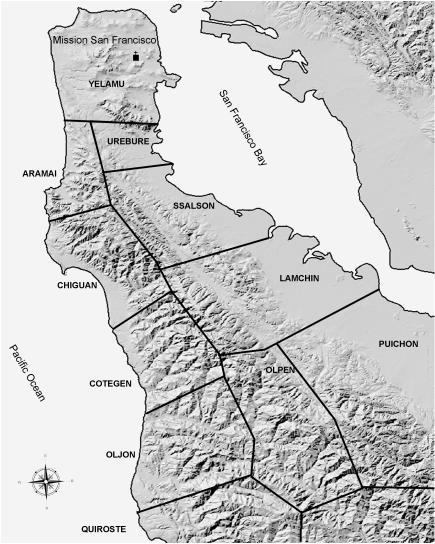|
What makes us unique?
The tribes of the San Francisco Peninsula include the Yelamu, Urebure, Aramai, Ssalson, Chiguan, Lamchin, Cotegen, Puichon, Olpen, and Quiroste. The first eight had the majority of its members baptized at Mission Dolores. The last three had the majority of its members baptized at Mission Santa Clara. Ramaytush was likely not the primary dialect of the Quiroste.
|
